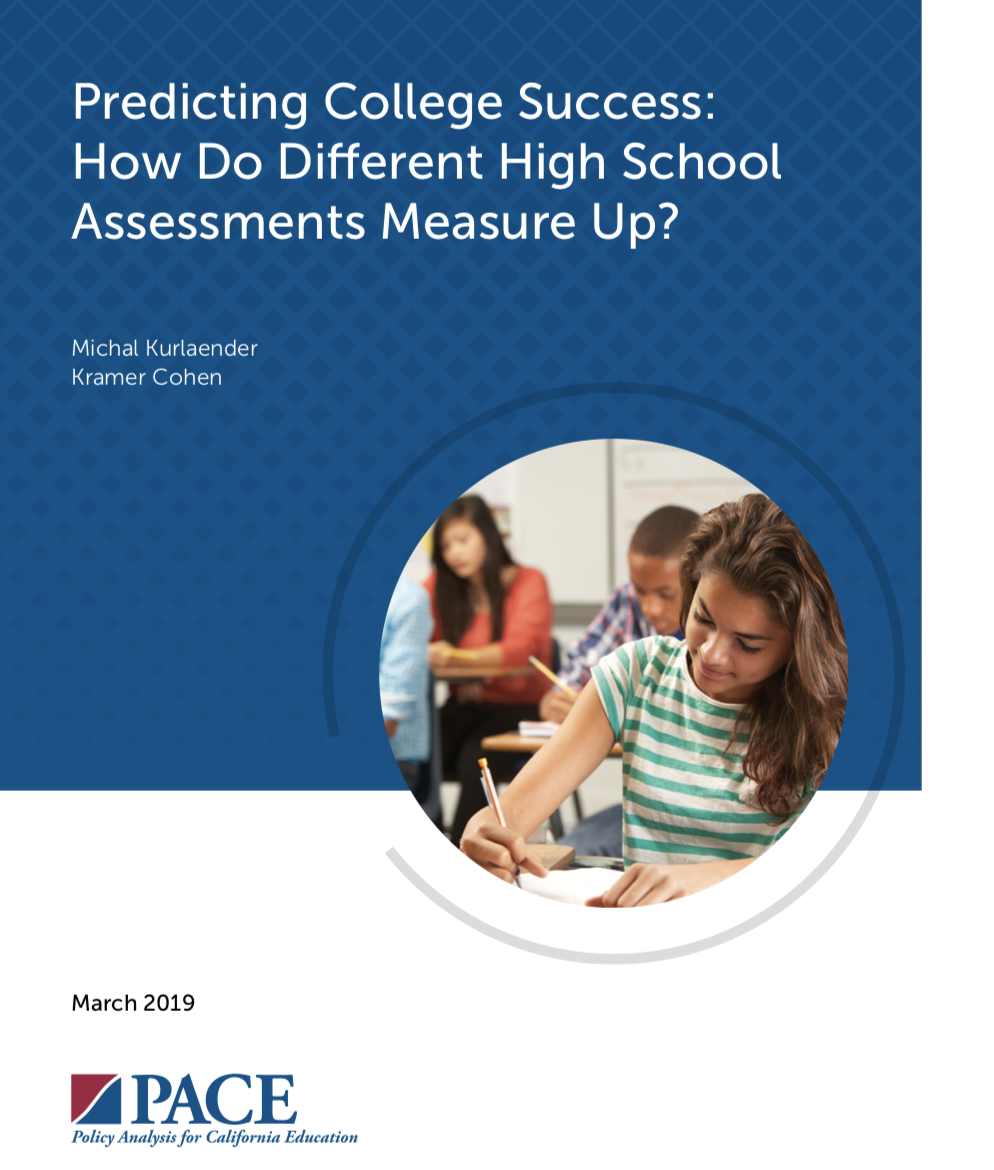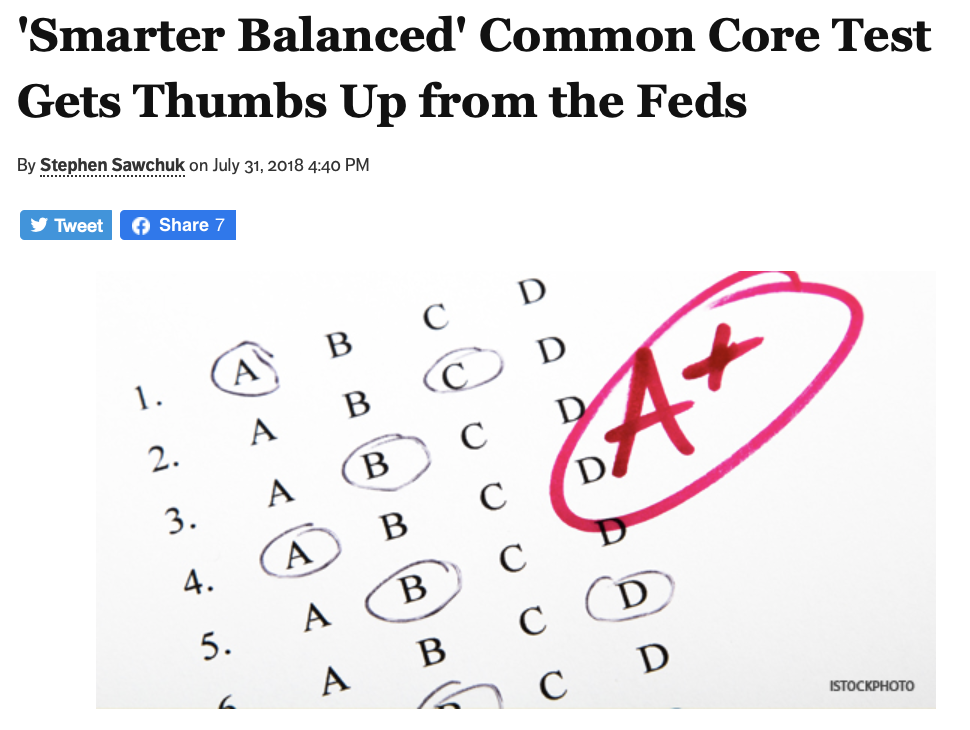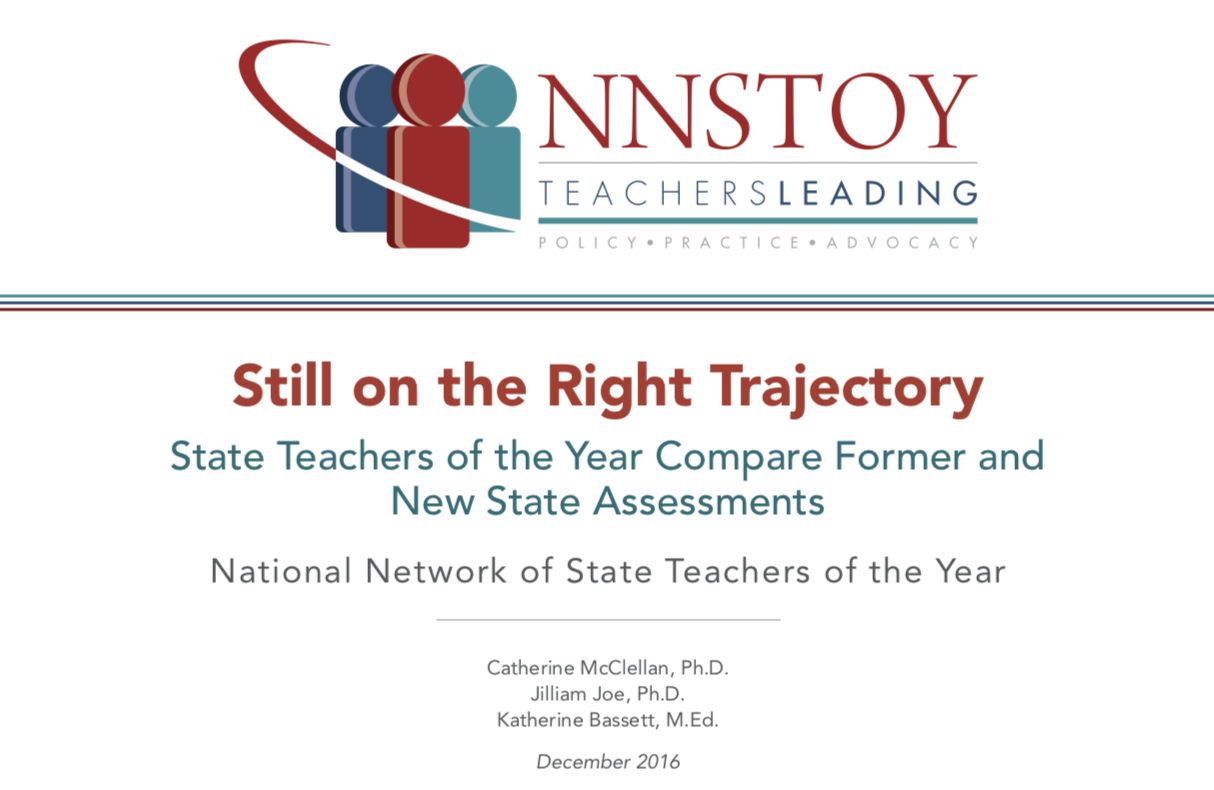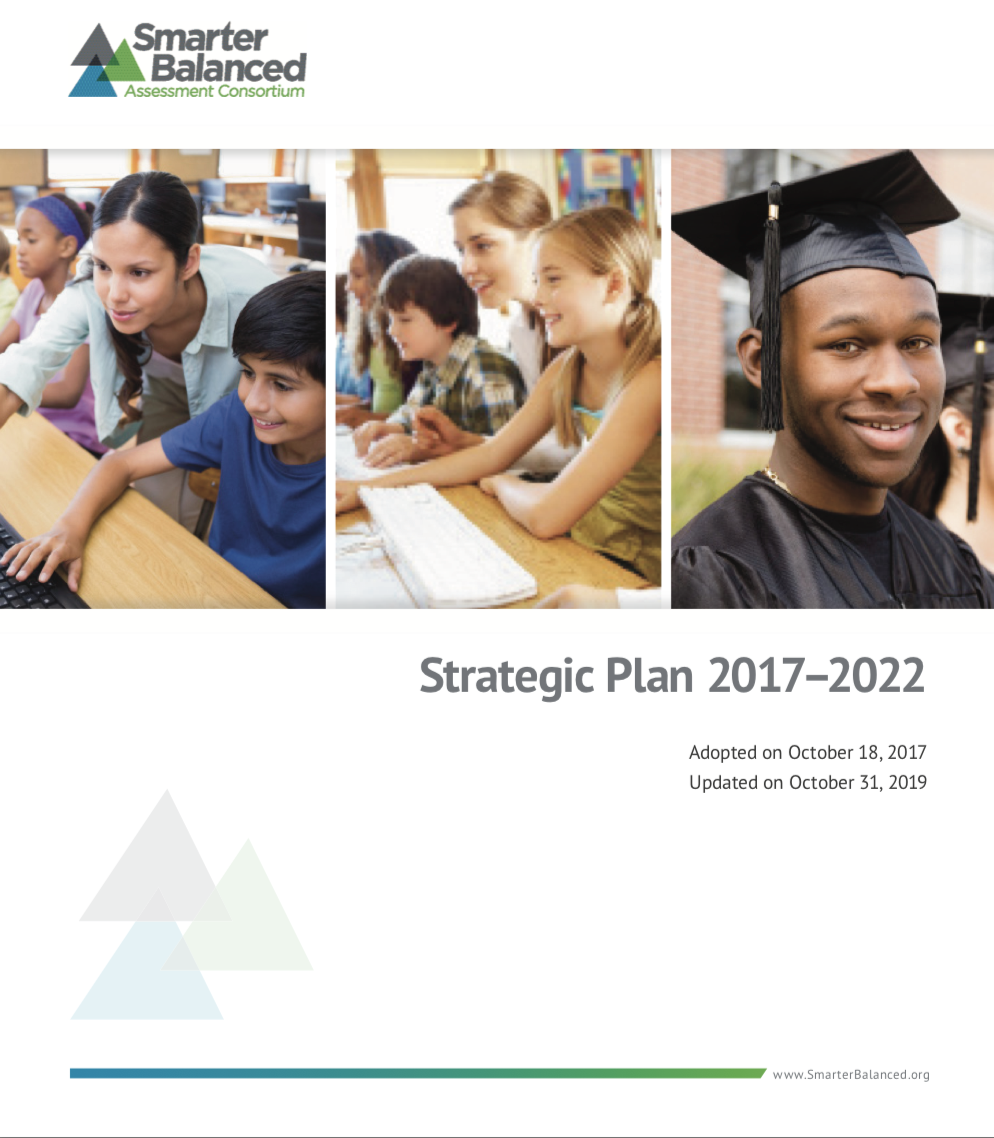2015: ISAAP PROCESS AND TOOL HELPS STUDENTS ACCESS NEEDS
The Individual Student Assessment Accessibility Profile (ISAAP) addresses student access needs for the Smarter Balanced assessments. The ISAAP process includes preparatory steps, a step for creating the ISAAP itself, and steps that allow educators to check that Designated Supports and Accommodations are entered correctly into the test engine.
Read More2019: SMARTER BALANCED RELEASES FOCUSED INTERIM ASSESSMENT BLOCKS
Focused Interim Assessment Blocks measure smaller bundles of content to give teachers a better understanding of students’ knowledge and academic performance and provide teachers with precise next steps for instruction.
Read More2019: SMARTER BALANCED TESTS RELIABLE INDICATOR OF INITIAL COLLEGE SUCCESS
The Policy Analysis for California Education (PACE) study “Predicting College Success: How Do Different High School Assessments Measure Up?” finds Smarter Balanced does as well as the SAT in predicting college outcomes, specifically first-year college GPA and second-year persistence rates for students enrolled in CSU and UC.
Read More2018: INTERIM COMPREHENSIVE ASSESSMENTS CUT SCORES UPDATED
Smarter Balanced updates cut scores, or achievement levels, for Interim Comprehensive Assessments (ICAs) for grades 9 and 10 to help educators detect even earlier in high school where students might need additional instructional support in mastering specific concepts.
Read More2018: SMARTER BALANCED TESTS MEET FEDERAL PEER REVIEW FOR GRADES 3-8 AND HS
Smarter Balanced members South Dakota and Nevada meet federal peer review requirements in grades 3-8 and high school. This designation means Smarter Balanced is one of two tests in the nation to meet all of the statutory and regulatory United States Department of Education peer review requirements for the general assessments in English language arts/literacy…
Read More2017: TEACHERS OF THE YEAR REPORT CALL TESTS MORE RIGOROUS, BETTER ALIGNED
The National Network of State Teachers of the Year (NNSTOY) report “Still on the Right Trajectory” finds that Smarter Balanced assessments, when compared to former state assessments, are more rigorous and better aligned with classroom instruction.
Read More2016: ALIGNMENT STUDIES VALIDATE QUALITY OF SUMMATIVE TESTS
Thomas B. Fordham Institute and the Human Resources Research Organization (HumRRO) conduct extensive alignment studies in grades 5 and 8 and high school, respectively, to evaluate Smarter Balanced end-of-year tests against the high-quality assessment criteria created by the Council for Chief State School Officers. The two studies affirm Smarter Balanced tests are high quality, and…
Read More2020: Remote Teaching and Learning Website Launched
Smarter Balanced formed the Distance Teaching and Learning Task Force to provide feedback and guidance to educators during the pandemic via a new Remote Teaching and Learning Website and Back to School Assessment Playbook.
Read More2017: Strategic Plan 2017-2022 Adopted
Consortium members identified opportunities for Smarter Balanced to maintain the quality of its assessment system while also looking to innovate and evolve in response to a changing education landscape. These insights informed the development of the Strategic Plan 2017-2022.
Read More2014: Achievement Level Setting Design and Summative Test Blueprints Approved
Achievement level setting, or standard setting, is the process for establishing one or more threshold scores on an assessment, making it possible to create categories of performance. This served as the initial achievement levels for the math and English language arts/literacy assessments that were administered in 17 states and one territory during the 2014-2015 school…
Read More




